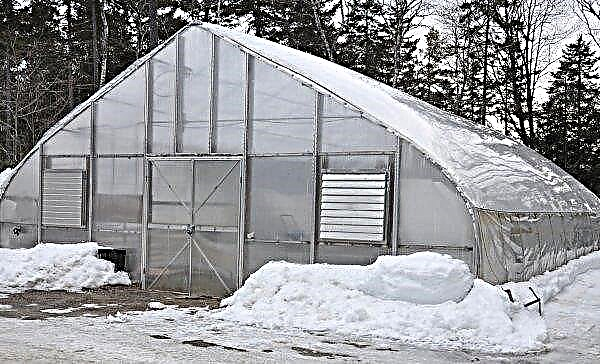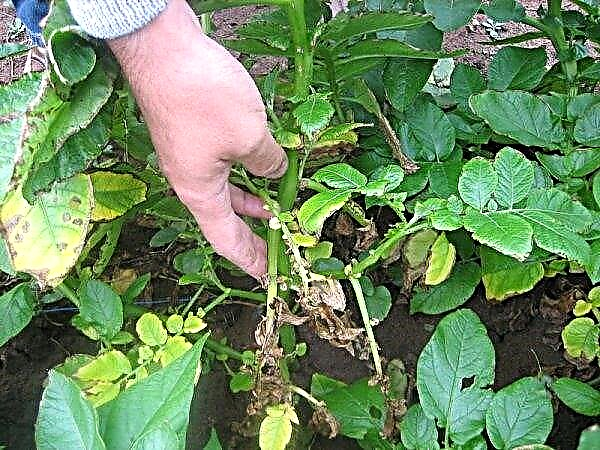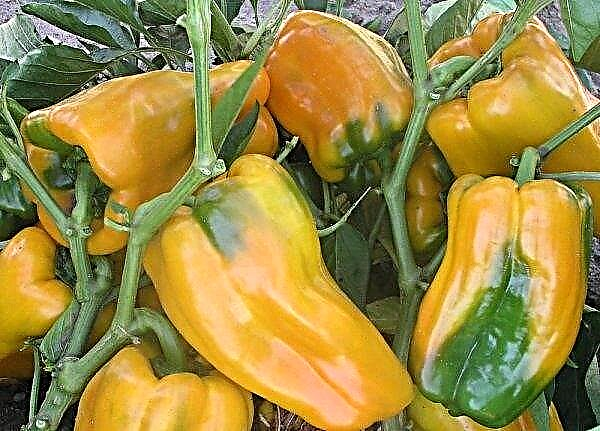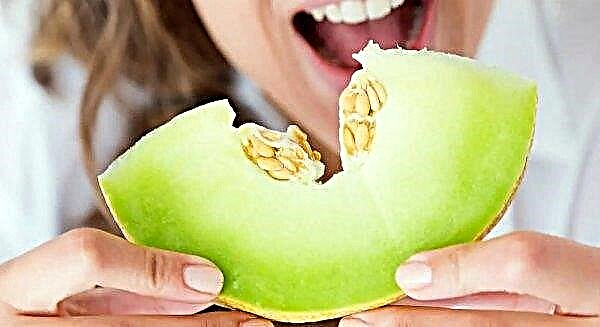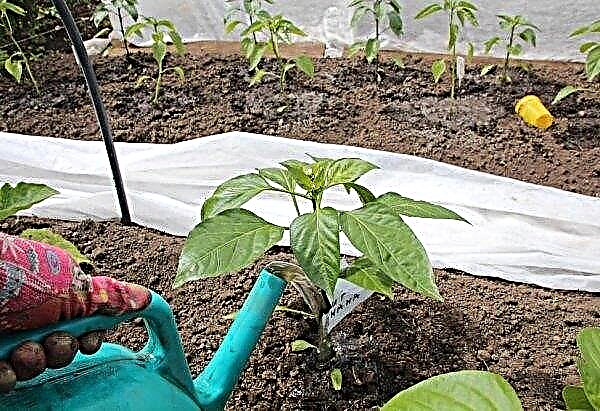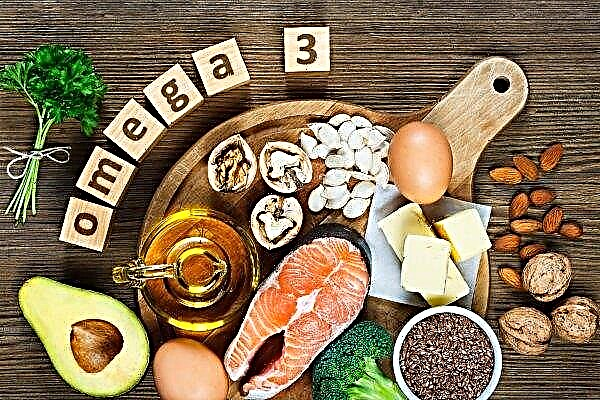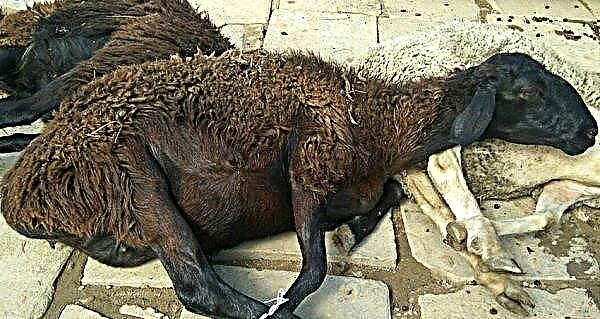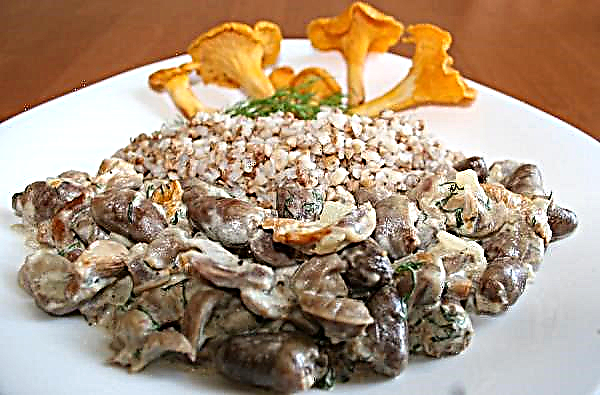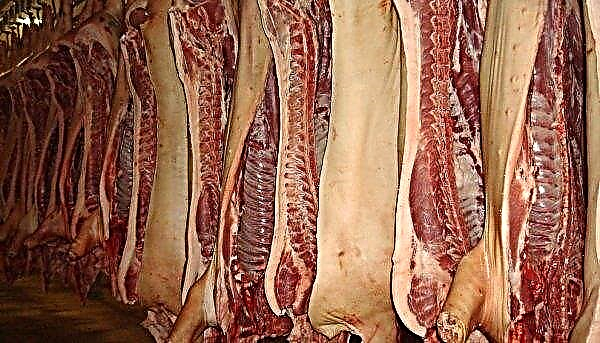Blackcurrant bushes are a familiar element of almost any Russian garden, regardless of the geography of its location. Summer residents by all means try to plant fruitful plants with good characteristics. Arcadia is just such a variety, it is a currant bush on which an abundant crop of large, fragrant berries is formed.
Grade Geography
Arkady - a late-ripening variety of chokeberry, bred at the Zonal Scientific Research Institute of Agriculture named after Rudnitsky. The parent plants were blackcurrant Slastena and Gracia. The authorship belongs to a small group of scientists: Kosolapova G.N., Plenkina G.A., Ogoltsova T.P. and A. A. Rusinov. Since 2007, Arkady was included in the Rosreestr of fruit plants.
The variety is intended for cultivation in areas with a temperate climate, but it can also be successfully grown thanks to frost resistance and good tolerance of drought in areas of risky farming.
Botanical Description
Blackcurrant is a deciduous shrub with edible fruits belonging to the gooseberry family.
Berries are a valuable source of vitamin C, which is much more in them than in any fruit grown in the Russian Federation. They also contain vitamins A, E and group B, minerals and nutrients such as phosphorus, potassium and magnesium, organic acids and tannins. Due to the pectin content, currants reduce cholesterol and blood sugar. It is also a rich source of antioxidants, which are mainly responsible for flavonoids and phenolic acids.
Flavonoids inhibit the formation of toxic compounds in the body and slow down the aging process. Anthocyanins found in the currant skin have antibacterial properties. Rutin promotes the absorption of vitamin C, strengthens arterial vessels, and also prevents bleeding and varicose veins.
Quercetin helps to cleanse the urinary tract and acts as an anti-allergic substance. Phenolic acids have an anti-inflammatory effect and prevent the formation of blood clots in the arteries. The fruits of blackcurrant strengthen the immune system, so they are very useful in the treatment of colds.

Currant leaves also have healing properties. The infusions prepared from them accelerate the elimination of toxins and regulate the functioning of the kidneys. They are a natural remedy that promotes the healing of wounds, as well as skin lesions resulting from insect bites. They contain tannins with anti-inflammatory and astringent properties, and also have bactericidal and phytoncidal properties.
The berries of this culture are best consumed fresh, freshly picked from the bush, but you can also make delicious juices, jams and jellies, homemade wine or liquor from them. Currants are frozen, and after exposure to subzero temperatures, the berries partially retain their properties and vitamins.
Bush characteristic
Currant Arcadia has a medium-sized bush with a compact crown, whose height rarely exceeds 1.2 m. The main fruit-bearing branches are vertical, upright, covered with brownish-gray bark. On young shoots, the coating is smooth, with age it becomes rough and is often covered with mossy coating.
Video: Blackcurrant Arcadia
The leaves are large, composed of 3-5 segments, dark green. On the underside, they have numerous tiny glands that secrete aromatic essential oils that give a characteristic smell to currant leaves.
Drought resistance, frost resistance
Arcadia is frost-resistant up to -25 ° C and can withstand long periods of drought. In the description of the variety it is indicated that it has good resistance to powdery mildew, but only if the culture is grown with free access of wind and light to the crown.
Productivity and fruiting
Flowers appear on the plant in April or May, it depends on the weather and the region of cultivation. They are small, collected in inflorescences, have pink petals. The variety is characterized as self-pollinated, but for good yield it is advisable to plant several more other currant varieties nearby. Arcadia is very productive, from one plant you can get about 2.5 kg of berries. Shrub ripening occurs in late July or early August, which is a late date for this crop.

Berry size, taste
Fruits weighing 2.7-5.2 g, round, black, with a sweet and sour taste and characteristic aroma, very tasty and healthy. Berries are arranged by brushes. The separation of currants from the stem is dry and does not violate the fetal membrane.
Advantages and disadvantages
Small cons of Arkady currants cannot obscure the undoubted advantages of growing this particular variety.
- Advantages:
- tasty and large berries;
- good resistance to powdery mildew;
- annual high yield;
- unpretentiousness to growth conditions.
The disadvantages include the tendency to lodge the lower branches under the weight of the crop.
Landing Features
The land for growing currants must be carefully prepared, because the bushes will grow in one place for many years. Some work is worthwhile in advance. It is important to thoroughly clean the soil of weeds, especially perennials with a long rhizome, such as wheat grass, bindweed or sow thistle, because later it will be difficult to get rid of them. To do this, you need to dig deeply the soil with the help of a pitchfork, and manually clear of vegetation.
Video: How to properly care and plant currants
It is also necessary to check the pH of the soil using analysis or a special device and, if necessary, carry out its deoxidation or acidification. Before planting, it is useful to enrich the soil with organic substances, for this you can use manure (both composted and dry or granular) compost or vermicompost.
You can also sow at this place (one season before the currant is planted) green manure, acting as a green fertilizer (mustard, clover, legumes). Fertilizers used should always be mixed with the top layer of the substrate using a pitchfork, shovel or cultivator.
Did you know? A 250 ml container containing fresh blackcurrant berries serves as a source of such an amount of vitamin C that in excess of three times overlaps the daily portion of this substance that a healthy adult needs.
The timing
Gardeners believe that both spring and late autumn are suitable for planting currants, but the latter is preferable, since at this time the air temperature is within +15 ... + 22 ° C and there is enough moisture in the soil. In autumn, the most suitable time for shrub transplantation is the second half of October..
 If you need to plant a crop in the spring, then the period is suitable for this, when the snow has melted in the garden and the earth has dried out a bit, usually this happens in late March or early April.
If you need to plant a crop in the spring, then the period is suitable for this, when the snow has melted in the garden and the earth has dried out a bit, usually this happens in late March or early April.
Conditions
At the time of planting currant seedlings, the buds on the bush should be at rest. It is undesirable to transplant a plant on which leaves have already blossomed, since in this case the adaptation process will be delayed and the bush will be sick for a long time.
Choosing the right place
Currants grow best on loamy and clay-sandy slightly acidic soils (pH 6.0–6.5). Nonetheless, culture is not too demanding, and its cultivation can be carried out on any garden soil, provided that it does not contain too much limestone. The shrub likes sunny places, but it can bear fruit in partial shade.
Did you know? Tests by biologists confirm that the sound of music greatly influences the development and well-being of plants. The sound vibrations of the classics positively affect the vegetation of cultures, and the jerky, belligerent sounds of Heavy Metal contribute to a halt in growth and inhibition of life.
It is desirable that the space intended for its cultivation is protected from the winter wind, because the currant is not completely resistant to freezing. Since the variety Arcadia blooms quite early, already in April, during this period it is very vulnerable to spring frosts.

Selection and preparation of seedlings
It is advisable to purchase young shrubs in fruit nurseries, which can provide gardeners with healthy planting material. Importantly, such seedlings almost always correspond to the declared variety.
A good young plant should have a branched root system, consisting of two or three thick processes and many thin. In the aerial part, the presence of 3-4 shoots, covered with smooth bark and not having any visible mechanical damage or mold deposits, is desirable. Before planting, the gardener using a secateurs removes all non-viable parts of the currant, such as dry roots or branches.

Landing algorithm
Bushes are planted 5-10 cm lower than they grow in the nursery. In the summer, new roots will grow from the part of the shoots that will be covered with soil, so thanks to a deeper location, gardeners strengthen the root system of plants. The soil around the bush is compacted and watered. Immediately after planting, the bush is cut very short (just above the ground) leaving only 2-3 buds.
So that there is enough space for the growth of bushes, and it is easy for the gardener to collect the fruits, they need to be planted in rows at a distance of about 2 m from each other, observing a distance of 1.2 m between the bushes.
 Black currants can also be planted on mixed beds, in combination with ornamental plants.
Black currants can also be planted on mixed beds, in combination with ornamental plants.
Care
Currant care consists of the necessary agronomic work, regularly performed by the gardener. Each event has its own time.
Requirements for the care of currants:
- Mulching. This agronomic technique has a beneficial effect on the growth and development of shrubs. You can cover the soil under the bushes with agrotextile, spanbond or sprinkle the space with crushed bark, grass, straw. Currants love moisture in the soil, and mulch reduces the evaporation of water and thereby retains moisture in the substrate longer. It also inhibits the growth of weeds in the root zone of berry plants.
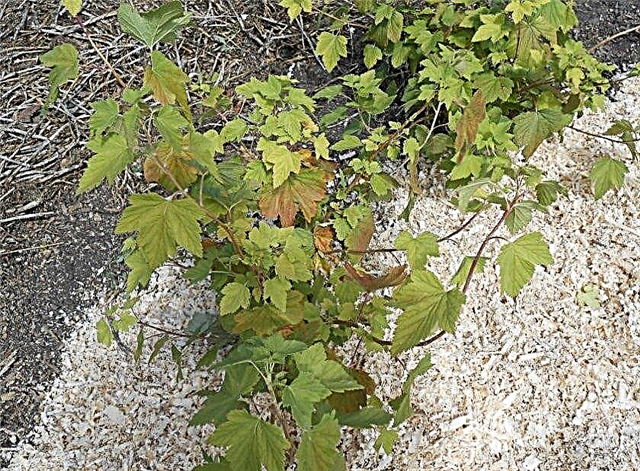
- Soil care. If the land in the near-stem circle remains bare, the gardener must ensure regular weeding and loosening of the soil around the shrubs. This operation can be carried out manually (with a chopper, Fokine plane cutter) or use a cultivator.

- Top dressing. During the cultivation of currants, it is necessary to periodically apply organic matter (manure, compost, vermicompost) or mineral fertilizers under the bush. At the same time, it must be remembered that the culture is sensitive to chlorides, so only those top dressings that do not contain them should be used. You can use mixtures specifically designed for fruit bushes, the ingredients are correctly selected and balanced in them, taking into account the requirements of berry plants. For currants, it is also recommended to make multicomponent mineral fertilizers, which can be purchased in garden stores.
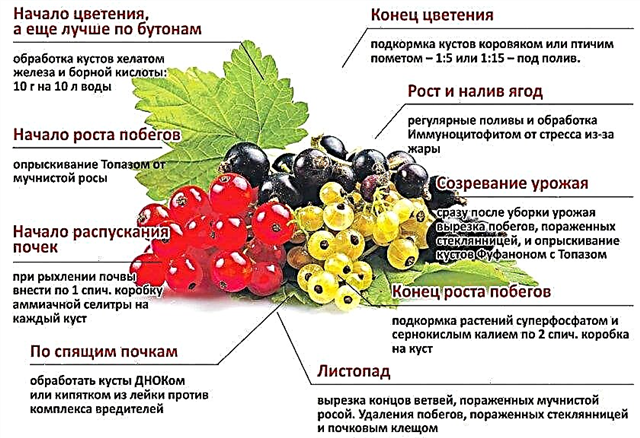
- Watering. The culture has rather high requirements for the moisture content in the basal layer. The gardener can monitor the condition of the soil with a hygrometer and water the bushes if necessary. It is best to take rainwater, which is collected in special barrels or containers.

- Pruning. The operation, during which the first truncation of the branches is done, is carried out immediately after planting the seedling. Over the next 2-3 years, the bushes grow randomly, and only very thin, broken or diseased shoots can be removed. Beginning in the fourth year, when the plants are already fully bearing fruit, anti-aging pruning should be done every year. Currant bears fruit best on annual and biennial branches, both those that have grown at the base of the bush, and which are the side branches of older shoots. It is necessary to cut off all four-year branches and leave on the shrub 4-6 strongest annual processes and from 3 to 5 two-three-year-olds. For work, it is advisable to use a garden pruner. Work on the formation of the crown and rejuvenation of the bush is carried out immediately after harvesting or later - in the fall, winter or early spring. Shoots lying on the ground, dead, infected with diseases and pests, should be regularly removed, as well as those that overly thicken the bush. If the procedure has not been carried out for a long time, and the crown is excessively compacted, which complicates the access of light and air, the gardener needs to cut at least half of the branches in one step.
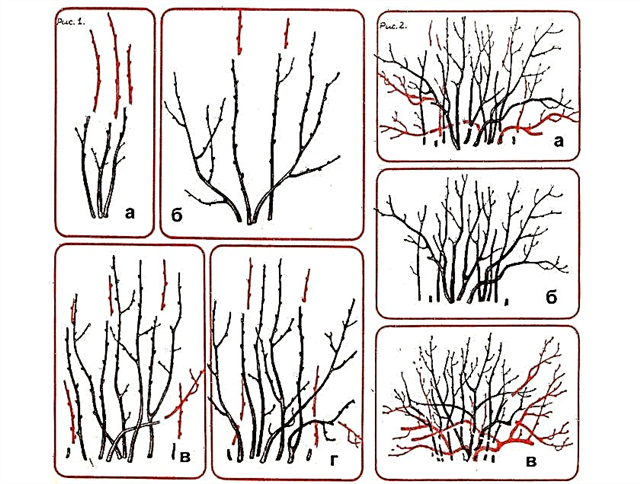 Fig. 1. Currant pruning: a - annual seedling; b - a biennial bush; c, d - shortening of shoots. Fig. 2. Currant bush before anti-aging pruning (a), after it (b) and pruning of a neglected bush (c)
Fig. 1. Currant pruning: a - annual seedling; b - a biennial bush; c, d - shortening of shoots. Fig. 2. Currant bush before anti-aging pruning (a), after it (b) and pruning of a neglected bush (c)
Winter preparations
Since the currant of Arcadia is highly resistant to frost, in the southern regions and regions with a temperate climate, bushes can not be insulated for the winter. When growing shrubs in harsh climates, where long-term temperature drops to –25 ...– 30 ° C are not uncommon the gardener can apply additional shelter that will not allow the currant to freeze.
Important! The gardener should remember that currant bushes should not be unnecessarily flooded with water, since the formation of dirt makes it difficult for air to reach the roots and can serve as an impetus to the beginning of rotting.
To do this, the bushes are spudded with a high layer of soil covering the roots. Instead of soil, it is possible to warm with sawdust of hardwood or well-ripened humus. As soon as the snow melts, the bush is freed from additional shelter so as not to delay the heating of the earth in the spring.

Breeding methods
Currants can be propagated using lignified cuttings or rooting cuttings. For the first method, choose the autumn period. The gardener cuts out the strongest shoots, which he stores until spring in a cool, dry place, for example, in the basement or on the bottom shelf of the refrigerator.
To seedlings survive, it is best to fill them with sand, which must be kept in constant humidity. The recommended length of the branches is about 20 cm. In the spring they are planted in the ground of the nursery so that the highest bud is on the surface.

When multiplying layering choose a healthy annual shoot (layering), growing low above the ground. Him tilt to the soil and immerse in a previously dug shallow groovethen fall asleep with soil. The branch can be fixed in this position with a thick wire curved in the form of a hairpin.
Before filling, the bark of the branch can be cut in several places and sprinkled with dry powder of a growth stimulant for faster rooting. Throughout the season, the concern of the grower is to moisten the soil (,) and, as necessary, increase its layer. In the fall, check if enough roots have formed on the layering. If everything is in order, the stem is cut from the mother plant and planted in a new place. If the roots are too small, the branch is left in the same position for a few more months and cut off from the adult shrub only next fall.

Diseases and Pests
Currants are prone to diseases and pests. To combat them, gardeners usually use various types of natural or chemical preparations. Always use these products only in accordance with the instructions on the label.
The most common diseases and pests of blackcurrant include:
- Aphid - the symptoms of the presence of this small pest on the bushes are distorted and twisted leaves on the tops of the shoots, often they have a sticky coating - these are insect feces or honey dew.The body of insects reaches 5 mm in length, they often settle on young shoots and the underside of leaf plates. Control: shrub shoots are smeared with birch tar to kill aphid eggs, it is also recommended to manually remove infected shoots along with pest colonies (around June), use organic plant protection products, infusions made from nettle, tansy, garlic or onions. In the case of the mass appearance of insects, it is necessary to combat the use of chemicals "Calypso 480 SC", "Aphisol Bio AL", "Aphid Stop 01 AL", "Agricole".

- Spider mites - Their presence on the currant gives out tarnished leaves, on the surface of which white dots appear, with time they turn yellow and fall prematurely. Sometimes all parts of the bush are covered with a thin web, the affected plant blooms poorly and weakly bears fruit. Ticks are very small insects with a body size of less than 1 mm, and their young growth is completely translucent, which makes it completely invisible to the human eye. The pest can multiply quickly and become immune to pesticides, so it is difficult to deal with it. The currant is treated before flowering, in the phase of kidney swelling, using paraffin oil preparations such as Promanal 60 EC or Treol 770 EC. Early spring spraying with oily preparations approved for use on the crop minimizes the need for sporicides during the growing season of the shrub.

- Rust - the cause of the disease are spores of fungi living on pine branches. One of the main symptoms is the appearance on the upper side of the blackcurrant leaf plate of red (rusty) small dots, while small brown growths and honey-colored spots form at the bottom of the leaf. The ripened mycelium spreads with rain and wind, and is also transferred from place to place by birds and insects. To prevent the occurrence or further development of rust, gardeners are advised to spray shrubs with preparations containing fungicides. The first treatment is carried out after the plant has finished flowering, then the operation is repeated twice with an interval of 14 days after the berry is picked from the bushes.

- Anthracnose - a fungal disease, which is signaled by the appearance of first green, and later brown spots on the leaf plate, gradually covering the entire surface. These signs may appear on petioles and young shoots. On diseased plants from early July, premature leaf fall has been observed. This is dangerous because photosynthesis is reduced in bushes, they are inhibited in development, their frost resistance is reduced, and fruiting is impoverished. For prophylaxis and treatment, the use of fungicides such as Signum 33 WG is recommended.
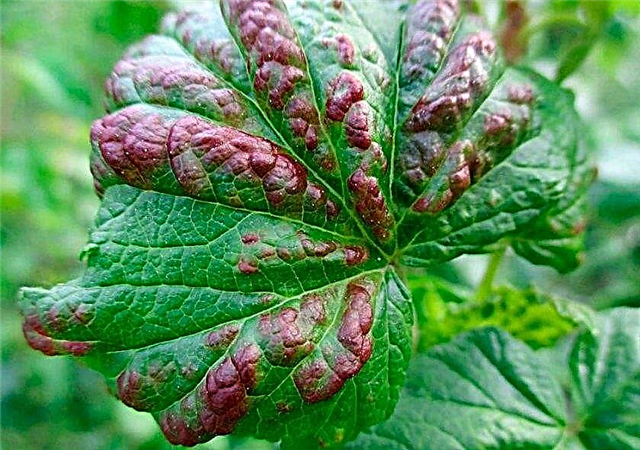
- Powdery mildew - The first symptoms usually appear in April. Then, almost every part of the plant begins to become covered with white coating with a characteristic structure, a little later changing color to brown. Diseases of currant leaves and its other parts appear mainly due to high humidity and dry soil, as well as when applying large quantities of nitrogen fertilizers. Affected parts of the shrub should be removed, and the remaining should be sprayed with copper-containing preparations or fungicides. If powdery mildew attacked the currant during leaf growth, it is necessary to treat the plant every 3 weeks.
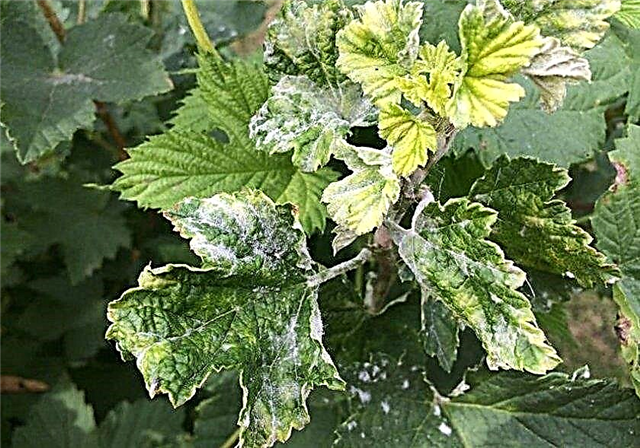
Harvesting and storage
Arcadia berry picking usually begins in the first half of July. They are harvested when they reach full maturity - at least 95% of the fruits must have a matte black color typical of this variety, and the remaining 5% during this period usually change color. Fruits are separated from the bush along with long peduncles, whole clusters.
Important! Carrying out the chemical treatment of shrubs, the gardener must take care of his own health and use protective clothing that protects the face, body and respiratory system.
Having reached maturity, the berries can remain on the bushes for some time, so that people can collect them for current consumption. However, it is not advisable to keep them on the branches for too long, because, overripe, they crumple easily during harvesting and secrete juice.
 According to gardeners, after harvesting, they can be stored for 5–10 days in a cool place at a temperature of +5 ... + 10 ° C
According to gardeners, after harvesting, they can be stored for 5–10 days in a cool place at a temperature of +5 ... + 10 ° C
It is not difficult to grow a currant bush, so it is worth planting several plants in a backyard or country garden. The shrub will bear fruit for many years, so the owner can enjoy the taste of these healthy, valuable berries, collected directly from the bush.





 Fig. 1. Currant pruning: a - annual seedling; b - a biennial bush; c, d - shortening of shoots. Fig. 2. Currant bush before anti-aging pruning (a), after it (b) and pruning of a neglected bush (c)
Fig. 1. Currant pruning: a - annual seedling; b - a biennial bush; c, d - shortening of shoots. Fig. 2. Currant bush before anti-aging pruning (a), after it (b) and pruning of a neglected bush (c)




